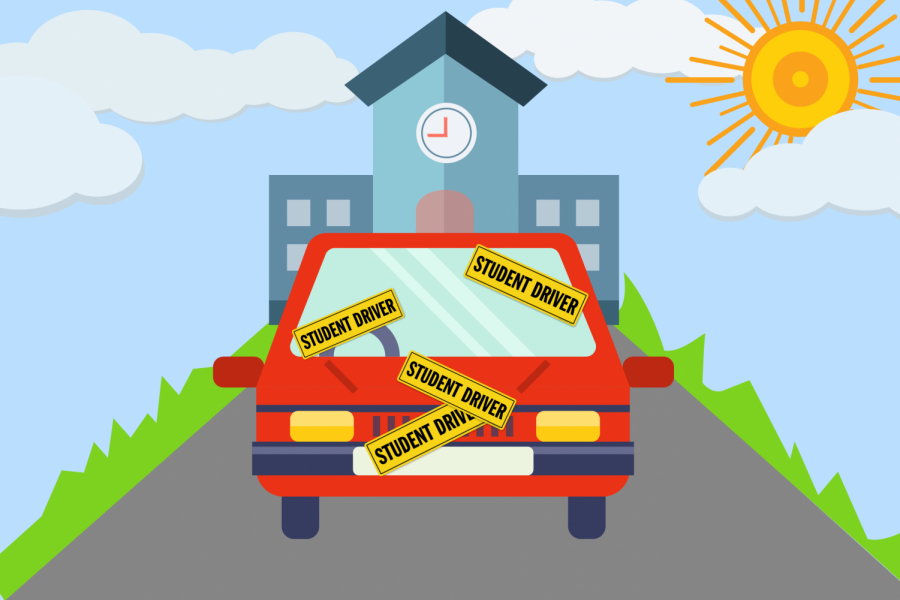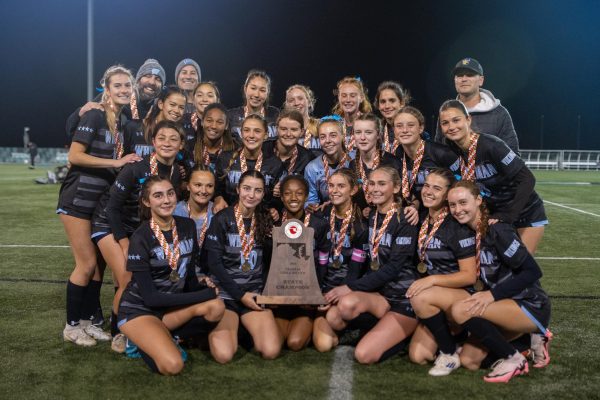MCPS: Bring back in-school Driver’s Ed
MCPS no longer offers Driver’s Ed during the school day. But they should.
February 28, 2020
Sophomore Adam Erdman embarked on his 30-hour journey in Driver’s Education to obtain his license last summer, and while he’s now nearly done, he said the process hasn’t always been easy. Every weekend, Erdman wakes up at 8 a.m. on both Saturday and Sunday to prepare for his three hour Driver’s Education class at Walter Johnson High School. Getting all of the mandatory 30 hours of in-class instruction, Erdman said, has been difficult given that extracurricular activities like debate tournaments and drumline performances often require weekend time themselves.
And Erdman certainly isn’t alone — taking Driver’s Ed outside of school poses unique challenges for students already juggling other obligations.
But it wasn’t always this way. For years, driver’s education classes were a staple in high school curriculums nationwide. Today, however, they seem to have been phased out of high schools almost entirely. In 2014, only 15% of eligible students nationwide were taking high school Driver’s Ed courses as compared with 95% in the 1970’s, and those numbers are only decreasing as more and more schools drop Driver’s Ed courses to cut costs. In Montgomery County, all high school students are left to pursue their permits and licenses outside of school hours.
Because of the cost of Driver’s Ed, it becomes inaccessible to many students and, in general, the sole reliance on private driving schools can put a strain on students’ personal lives by forcing them to put aside other activities to instead attend classes.. In order to simplify the process of obtaining drivers’ credentials, MCPS should provide Driver’s Education classes in high schools.
iDriveSmart, one of the most popular private programs in the area, charges $635 for their full driving program, which includes 30 hours of in-class instruction and six hours of in-car instruction. This cost can prohibit low-income students from receiving the necessary information to obtain a driver’s license.
Nationwide, many students have to delay getting their license due to high costs. According to the American Automobile Association, in 2013, teens in households making more than $60,000 a year obtained licenses at a rate of 60% within one year of their state’s minimum age for licensure. For teens in households making less than $20,000 a year, only 16% had obtained a license within a year of their state’s minimum age for licensure, highlighting the disadvantage that high fees have on low-income homes.
Not only do these classes charge hundreds of dollars in tuition, but students also have to be able to travel to classes at locations that aren’t always convenient. Many find themselves in situations similar to Erdman’s. Senior Gabby Pakravan said that, for her, transportation to and from classes was sometimes challenging because her father’s work hours fluctuate, and, as a result, he wasn’t alway able to take her to classes.
“I could really only take the public bus,” Pakravan said. “It was often 15 or more minutes late, so then I would be late to class.”
Having Driver’s Ed classes in school would alleviate this concern because, rather than driving for twenty minutes to sit in a classroom for three hours at a time with people they’ve never met, students would only have to walk down the hallway.
Beside inconvenient class times, students who have participated in iDriveSmart have found it difficult to stay awake and focused in the three hour long classes. Studies generally put the average attention span for a sixteen-year-old at only 32 to 48 minutes, so while most teens are likely able to hold their focus for the duration of a standard 45 minute high school class period, a three hour Driver’s Ed class can be mentally taxing. If Driver’s Ed took place during the school day, classes would only be 45 minutes — making lessons more manageable and therefore more engaging.
Opponents argue that students would have to take time out of their schedules to take Driver’s Ed classes, forgoing other electives for the class. But this issue has a quick fix: Driver’s Ed in school wouldn’t be mandatory. Students who want to take the class in school would have that option, but students who don’t could still take the class with private companies. Even if some students don’t want to participate in these classes, schools should still offer them to ensure that everyone has the opportunity to receive a driver’s license.
Offering an all-expenses-paid class through the school during the day would give all students access to quality driver’s education. For many, driving will be a vital skill in adult life, and public school systems should be obligated to provide students with the means to attain that skill.










